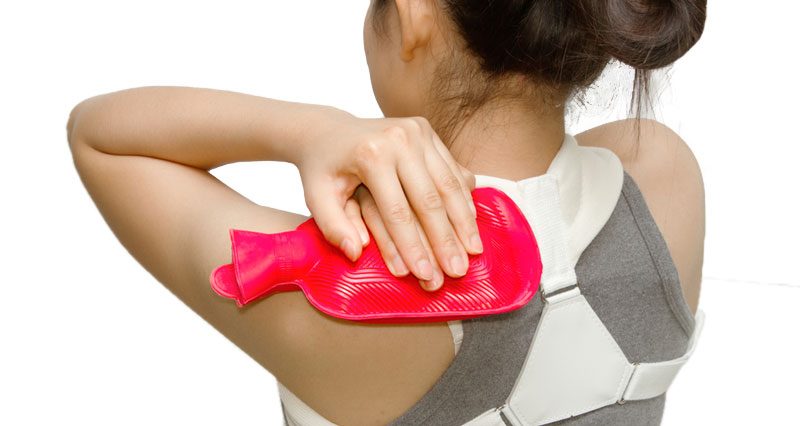Heat Therapy Expert in Perumbakkam
Your Trusted Partner in Heat Therapy
The use of heat therapy and/or massage before stretching may reduce muscle spasm and enhance tissue flexibility. We are here to provide you with top-notch care and guidance to tackle your problems.

Understanding Heat Therapy
What is Heat Therapy?
Heat Therapy involves the use of heat to reduce pain. It is often used to relax stiff joints and muscles. Heat therapy increases the temperature of the targeted area, improving circulation and blood flow. This can soothe painful joints and increase muscle flexibility.
How does it work?
The application of heat to a tissue such as muscle is thought to increase the blood flow to that area, possibly facilitating the healing process by delivering the required cells and nutrients. Heat may also increase the elasticity/extensibility of connective tissues, thus reducing muscle tightness and/or spasm. The sensation of heat within the tissues may distract the brain from pain sensations that might be coming from the same region (the so-called pain gate theory), thereby providing further pain relief.
Is it effective?
There is conflicting evidence on the use of heat therapy in the management of whiplash. A systematic review which updated evidence on passive physical modalities reported no new evidence associated with the effectiveness of heat therapy. Based on historical and current evidence base, it was recommended that heat therapy is ‘likely not helpful/ not worth considering’ as a management option for recent grade I-II whiplash. However, a rapid review synthesising evidence from highest level primary studies, systematic reviews, and well-conducted clinical practice guidelines reported that heat (and ice) may assist in reducing pain in the initial treatment of neck pain including whiplash. Multiple clinical practice guidelines for the management of whiplash also stated conflicting recommendations relevant to the use of heat (or cold) therapy, ranging from ‘recommended’ to ‘insufficient evidence’. When heat (or cold) therapy is included as part of multimodal care (along with manual therapy, exercise and psychological strategies), one randomised controlled trial included in a systematic review reported a statistically but non-clinically significant improvement in self-rated disability for recent grades I-III whiplash, compared with education.
What does Heat Therapy consist of?
Various types of heat therapy treatments aim to warm areas of the body: dry heat, moist heat and professional heat therapy with the use of ultrasound or radiation.
- Dry heat — also known as conducted heat therapy, this type can take the form of heating pads, heat packs, hot water bottle, electrical heating pads and saunas.
- Moist heat — also known as convection heat, it can take the form of moist heating packs, hot baths and steamed cloths or towels.
- Thermal ultrasound — ultrasound heating applications can be used to treat certain conditions such as tendonitis. The transmission of sound waves causes tiny vibrations in the tissues that increase friction and generate heat.
Many professionals believe that moist heat therapy works better than dry heat because water transfers heat more quickly than air. They also argue than moist heat can heat the tissues ‘more deeply’, allowing more blood flow and better results.
There are now newer versions of heat therapy available that combine a carbon fibre heater with a rechargeable battery. This is built into a body wrap and can be used as targeted heat therapy, e.g. back wrap or shoulder wrap.
Techniques for Heat Therapy
There are two types of heat that can be used to reduce pain: dry and moist. Dry heat is easy to apply and may include heating pads or heat packs. Moist heat may be more effective and can include hot baths, hot water bottles, or steamed towels.
There are many types of heat therapy to choose from. The search may involve some trial and error to determine which therapy provides the best pain relief. Six specific options for heat therapy include warm water or steam, hot water bottle, heat wraps, heated gel packs, heating pad, and paraffin wax.
Hot tub, hot bath or shower, steam bath,sauna
Moist heat therapy can encourage overall feelings of relaxation and well-being that may lessen pain. For example, in a hot tub or hot bath, a whirlpool jet aimed at the lower back may offer the additional advantage of a gentle massage. Ensure the water is not hot enough to burn the skin.
Hot water bottle
A hot water bottle is a great option for use when relaxing on the couch, watching TV at night, or working at a desk during the day. These typically maintain their temperature for approximately 20 to 30 minutes.
Heat wraps
A heat wrap can provide several hours of low level heat therapy. They are convenient because they can be worn under clothing and can sit directly against the skin. Typically, they will wrap around the lower back and waist.
Heated gel pack
Similar to a hot water bottle, these packs are available in most pharmacies and stay warm for about 30 minutes after activation in a microwave. Some heated gel pack options may also deliver moist heat, which is preferable to many people.
Electric heating pad
A heating pad is a simple option that comes in different sizes. The electric option needs to be plugged into an electrical outlet, but will maintain a steady level of heat during use.
Heated paraffin wax treatment
Heated wax treatment is a fast-acting way to provide heat therapy benefits to the joints in the feet and hands. Small paraffin baths can be purchased for at-home use, while others are available in many salons and spas.
What conditions does Heat Therapy treat?
Heat is useful for relieving the following:
- muscle aches and pains
- stiffness in muscles and joints
- strains and sprains
- tendonitis
- muscle spasms osteoarthritis
- pain associated with neck or back injury
Frequently Asked Question on Heat Therapy
Yes, heat therapy can often be used in combination with other treatments to enhance its effectiveness.
